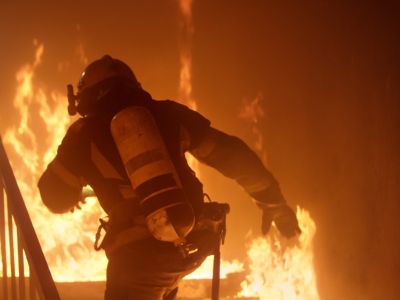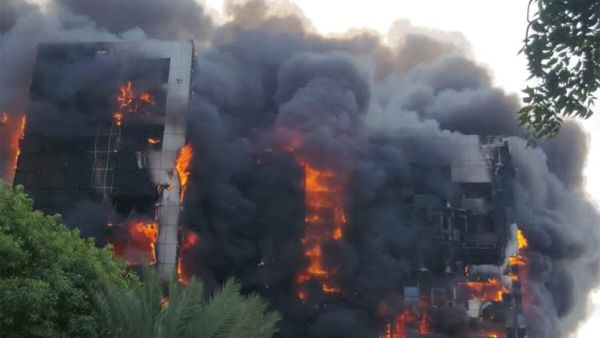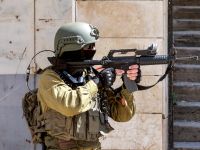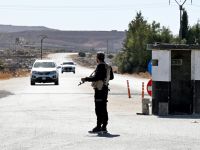ALBAWABA - The Sudanese Army headquarters in Khartoum was attacked later yesterday and the iconic building was set ablaze, as the brutal fighting between the Sudanese Armed Forces and paramilitary Rapid Support Forces enters its sixth month.
Social media posts show the building engulfed in flames. However, it is unclear how the violence began; Sudanese media said that it was the consequence of clashes between the army and the paramilitary Rapid Support Forces (RSF).
Accusations were thrown around as some claimed that Sudan's paramilitary RSF had attacked the army headquarters in Khartoum. AFP news agency reported hearing "huge bangs" in the capital as fighting continues to halt on the Sudanese capital. A fire also broke out in the Greater Nile Petroleum Oil Company Tower in Khartoum.
Nawal Mohammed, 44, said battles on Saturday and Sunday between the regular army and the paramilitaries had been "the most violent since the war began". Her family lives at least 3km away from the nearest clashes but Mohammed said “doors and windows shook” with the force of explosions, while several buildings in central Khartoum were set alight The Guardian reported.
Sudan's Power Struggle
The power struggle, which erupted on April 15, pitted Sudanese Military General Abdel Fattah al-Burhan against his former deputy chairman Mohamed Hamdan Dagalo "Hemedti" over who would settle in the leading position in the country.
So far, the conflict between the two military leaders has killed at least 3,900 people and displaced 3.5 million people internally or across borders away from the fighting zones in Khartoum and the western Darfur area.
Former head of the U.N.'s Sudan mission Volker Perthes said on Wednesday that the United Nations Joint Human Rights office has received credible reports about the existence of at least 13 mass graves in Sudan's El Geneina, a city in Darfur, and its surrounding areas.
Perthes told the U.N. Security Council that the victims of attacks on civilians by the paramilitary Rapid Support Forces (RSF) and allied militias, most of whom were from the Masalit community, were buried in mass graves.









